This post may contain affiliate links. If you make a purchase through a link, I may receive a small commission, at no cost to you. These commissions help keep this website up and running, and I thank you for your support. Read my full disclosure here.
My visit to the Isle of Wight was a last minute decision. My husband and I were in the midst of house renovations and in desperate need of a short break to escape the uncomfortable state of our deconstructed home. We were lucky to find a thatched cottage available in the small village of Brighstone. However, whilst the accommodation seemed reasonably priced, we were not prepared for the rather steep expense of the car ferries. So when planning your holiday to the Isle of Wight, especially in the peak of summer, make sure you account for this in your budget!
I have to admit, before my visit to the Isle of Wight I didn’t know much about what there was to see and do. But the isle is steeped in history, with large parts of it managed by the National Trust and the English Heritage. Queen Victoria spent her holidays here at Osbourne House, so the island became a fashionable holiday resort and was frequented by the likes of Alfred Lord Tennyson, Charles Dickens (who wrote much of David Copperfield there) and members of European royalty. Since then it has continued to be a popular tourist location. It is also known for its mild and sunny climate, although our visit unfortunately managed to coincide with a massive storm front. Despite this, we still very much enjoyed our visit and found so much to see and do.
How to get to the Isle of Wight
There is no land bridge to the Isle of Wight, so you need to get there by ferry. There are two ferry companies to choose from. Similar to airfares, the price varies depending on the time of year, time of day and day in the week. If you are on a budget, then take the time to find the best price.
Wightlink have several options to choose from:
- Lymington to Yarmouth
This trip takes 40 minutes and is the most westerly route, ideal for the west country.
- Portsmouth to Fishbourne
This route takes 45 minutes, with motorway connections and is 90 minutes from London.
- Portsmouth to Ryde
Super fast 22 minutes ferry, but it takes foot passengers only. There are direct rail connections on either side.
Red Funnel is the vehicle ferry we took as it was cheaper than Wightlink. Their ferries leave from Southampton
- Southampton to East Cowes
This trip takes 55-60 minutes and arrives in East Cowes. There is a connecting bus service from East Cowes if needed.
- Southampton to West Cowes
This super fast ferry takes 25 minutes but it takes foot passengers only. There is a connecting bus service from West Cowes if needed.
How to get around the Isle of Wight
Driving is the easiest way to get around the island, but there is a regular bus service that gets you to most sites. I was really impressed how extensive their routes were, as I saw the buses and bus stops everywhere we visited. Be aware that the timetable for summer and winter differs.
What to see and do on the Isle of Wight
Our visit to the Isle of Wight was in August, the heart of the British summer. However, as usual, the British weather had other ideas. We did not get much of a chance to sunbathe and swim on the beautiful beaches on offer here as there was a severe storm that battered the island during our visit. However, we did manage to get out and about to explore the isle between the bouts of rain. There was plenty to see and do to fill our week, in fact we could happily of stayed here for another week to explore more. In this guide I have detailed the places we visited. In addition to these sites, we also spent a lot of time hiking the many trails over the island. This place is a walkers and cyclists paradise and all of the paths and trails are well marked.
Brighstone Village
The first place we explored is the village we were staying in, Brighstone. Our accommodation was an adorable converted stable with a thatched roof. The village is filled with chocolate box style thatched cottages and conveniently had a lovely village shop selling delicious local produce, a convenience store, and a pub. Even if you are not staying here, Brighstone is well worth a visit.
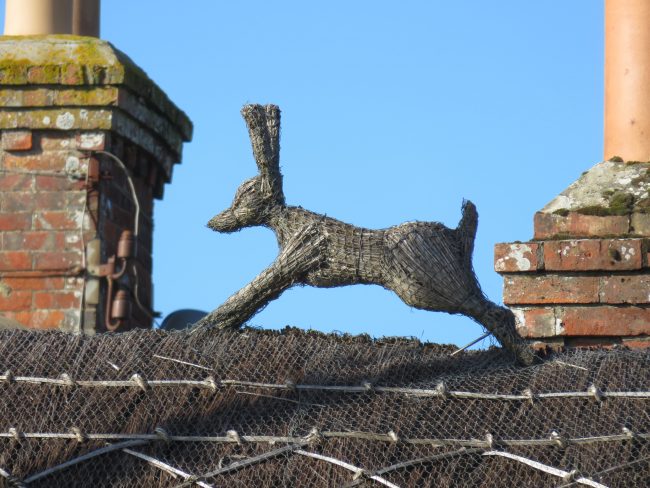

Mottistone Gardens and Estate
Near Brighstone is Mottistone Garden and Estate which is a National Trust property (free for members, entry fee applies for non members). We left the car behind and walked in the sunshine from Brighstone to Mottistone. Being summer, the gardens were in full bloom when we visited. They were created from an abandoned farmyard and surround a beautiful Elizabethan manor house. Although the gardens are not particularly large, they were so pleasant that we spent a lot of time just moving to different parts of the gardens to sit and enjoy. Onsite are toilets and a small café.
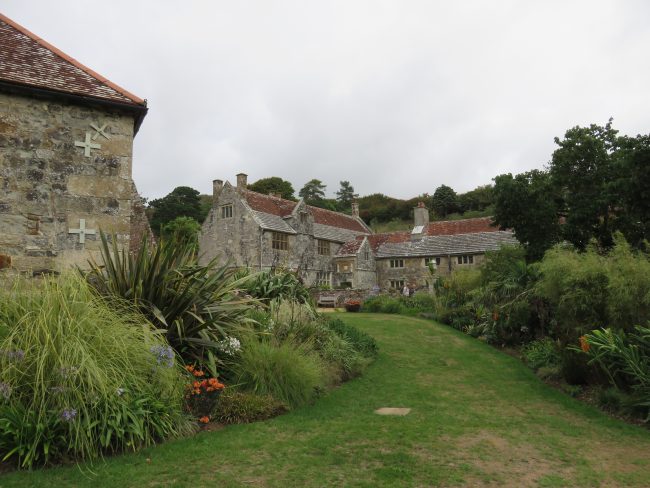

The Longstone at Mottistone
After visiting the gardens and indulging in an ice cream, we walked up to the nearby Longstone which marks the entrance to a Neolithic long barrow. The stones are what remains of a 6,000-year-old Neolithic communal long barrow for burying the dead. In Saxon times, 4,000 years after it was built, the Longstone is thought to have been used as a meeting place where judicial and administrative affairs were carried out.
There are plenty of walking paths that lead on from the Longstone. The National Trust have a suggested walk here. We continued our walk around the area and eventually ended back at Brighstone.

Compton Beach
There are lots of lovely beaches to enjoy on the Isle of Wight. As we were staying in Brighstone, our nearest beach was Compton. Parking is available at the Hanover Point National Trust Car Park (free for members, fee applies for non-members). The beach is not very wide here, especially if the tide is in, but it is a nice little spot and there is a coastal path if you feel like combining your beach time with a walk. The sand is black at this beach, so gets really warm in the sun.
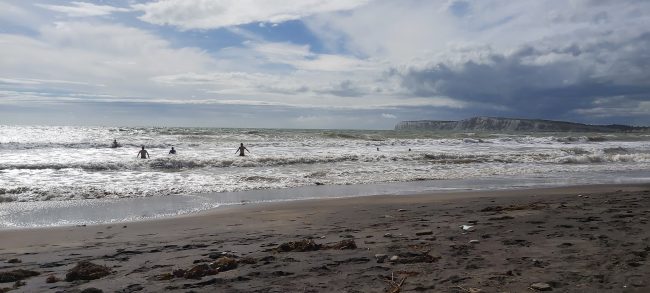
Isle of Wight Pearl Shop
Near Compton Beach is the Isle of Wight Pearl Shop and cafe (Military Road Brighstone, Isle of Wight PO30 4DD). We stopped in for a quick visit. If you are looking for some pearl jewellery, there is a good range of styles available from casual to dressy. I liked the replica of Princess Diana’s famous pearl dress on display here.
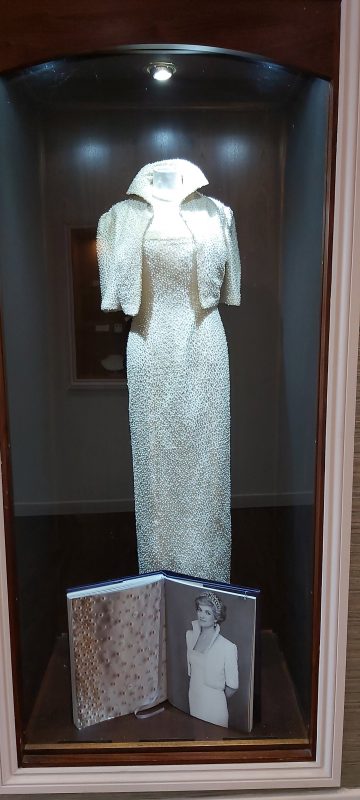
St Catherine’s Oratory
Managed by the English Heritage, St Catherine’s Oratory is a tall medieval octagonal tower which was once part of an oratory built here in 1328 as penance by a local landowner, who had plundered church property. Apparently he took casks of white wine from a ship wrecked nearby. Affectionately known as the Pepperpot, it seems to have been used as a lighthouse, and stands on one of the highest parts of the Isle of Wight. The site is free to visit and you can learn more about it’s history on the English Heritage website. Parking is available at Blackgang Viewpoint Car Park on the A3055. To get to it, walk across the road and head up the hill via the path. There are lovely views of the coast from up there, so it’s worth the walk, even though it was a rather stormy day when we visited.
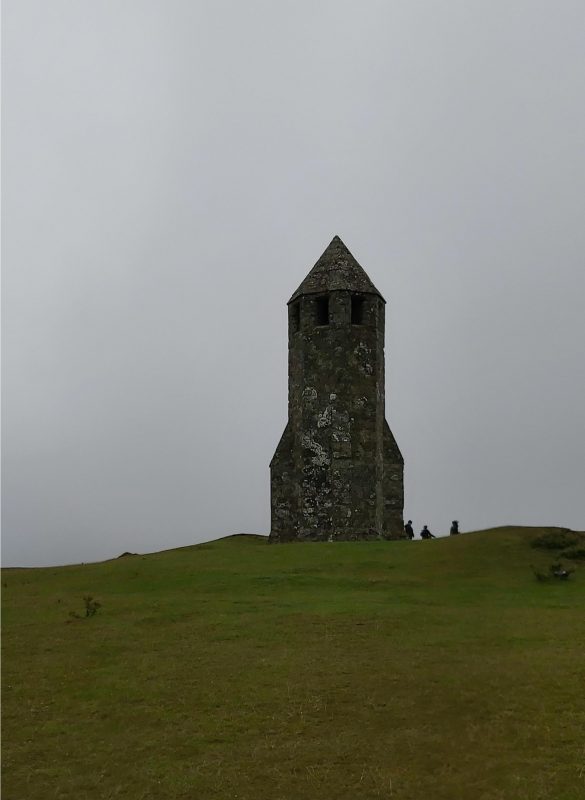
Ventnor Downs
Ventnor Downs is managed by the National Trust, but the car parks were free for all visitors. I really enjoyed our walk here as it is a lovely piece of countryside with 360 degree views of the isle.

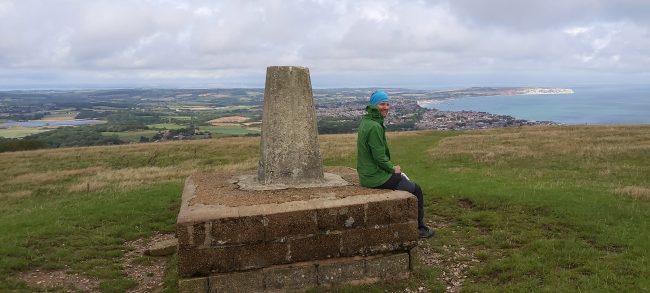
Ventnor
After our walk around Ventnor Downs, we headed into the historic seaside town of Ventnor. This would be a nice spot to stay. Due to it’s unique micro-climate, it became a famous Victorian health resort location. It is located on a very steep part of the coast and the roads are rather narrow, steep and winding. We parked at the town car park and explored on foot. There are plenty of nice cafes, restaurants and shops to explore. We had a really lovely lunch at The Kitchen at London House (40 High Street, Ventnor PO38 1RZ England) where the food was fresh, tasty and had that homemade goodness to it.
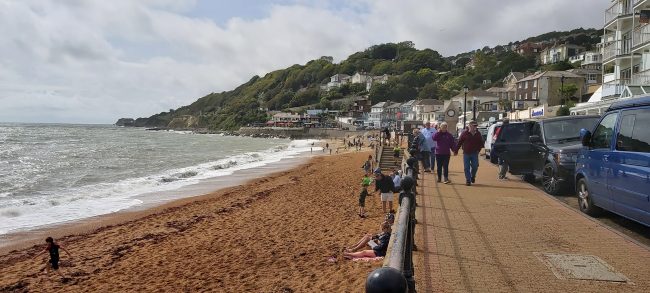
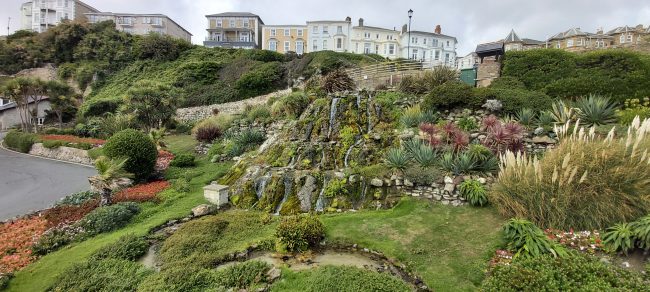
Newtown National Nature Reserve on the Hamstead Heritage Coast
If you enjoy bird watching, then Newtown National Nature Reserve on the Hamstead Heritage Coast is the spot for you. Managed by the National Trust, they have a car park available to visitors (free for members, fee applies for non-members) with toilets as well. This was a really peaceful spot to enjoy a walk around and watch the wildlife. We really enjoyed our visit here and ended up spending our entire morning at the reserve. There is also a 17th-century Old Town Hall you can visit beside the car park.
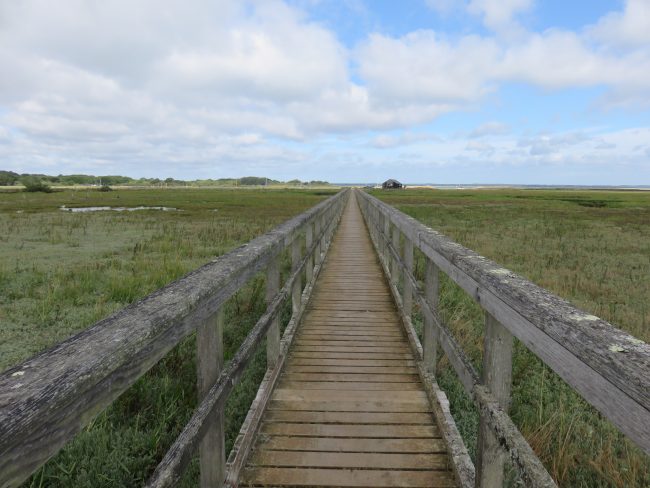
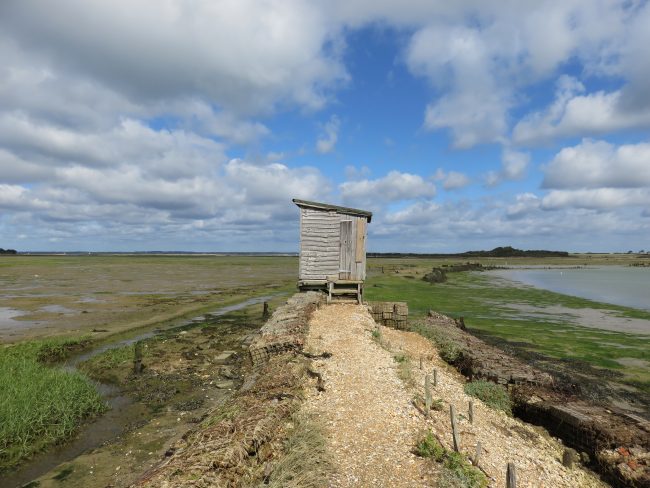

Cowes
We stopped off at Cowes for some lunch. Cowes is one of the largest towns on the isle and there is plenty of cafes, restaurants and shops to explore. It’s also quite nice to sit down at the harbour and watch the boats and ferries pass by. We really enjoyed a takeaway pizza from Captain Pizza (60 High St, Cowes PO31 7RL) which we enjoyed sitting on the esplanade. I have to mention it because I am really fussy when it comes to pizza and it was the best one I’ve had in a long while. The base was really light and thin with a lovely crispness to it. The toppings were also spot on.
We also stopped off to try the locally made ice cream at Bliss Ice Cream Parlour (12 Bath Rd, Cowes PO31 7QN). They sell both brands of local ice cream including The Isle of Wight Ice cream Co. and the luxury flavours of Minghella ice cream. Both were delicious, I thoroughly recommend you indulge as we did.


Osbourne House
We spent our afternoon exploring Osbourne House which is managed by the English Heritage (free for members, entry fee applies for non-members). I’ve wanted to visit Osbourne House since I watched the TV series Victoria. I really enjoy visiting historic homes, and the royal residences such as Windsor and Sandringham Estate have been highlights.
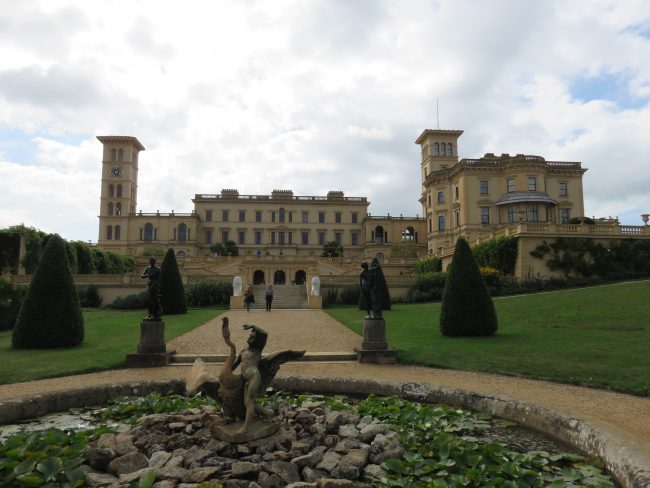
Osbourne House was the holiday home of Queen Victoria and Prince Albert and their nine children (yes nine!). Osbourne held fond memories for Victoria, especially following her beloved husband’s early death. Victoria eventually passed away at the age of 81 in Osbourne House. You can explore the house and see it as it was when Victoria and Albert lived there. I thought it was interesting how they had their initials included on the decor and decorations throughout the house. I really enjoyed the family portrait rooms which had large portraits of Victoria and Albert with their children and then their grown children with their families.
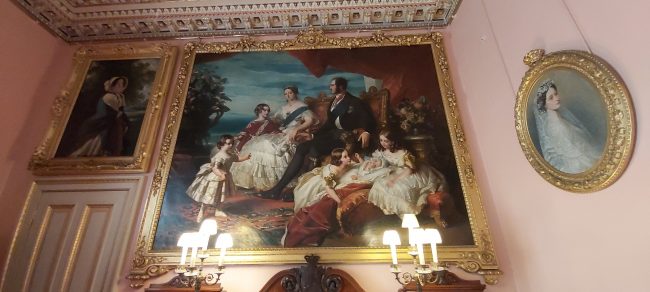
My favourite room was the Dubbar room. It was designed by Rudyard Kipling’s (famous author of ‘The Jungle Book) father, Lockwood Kipling, and master carver Bhai Ram Singh, and is detailed with intricate Indian-style plaster work to reflect Queen Victoria’s status as Empress of India. The impressive room was used for ceremonial dinners and was featured in the 2017 film ‘Victoria and Abdul’ starring Dame Judi Dench. The intricate details was breath taking, I spent some time just staring at it in awe.
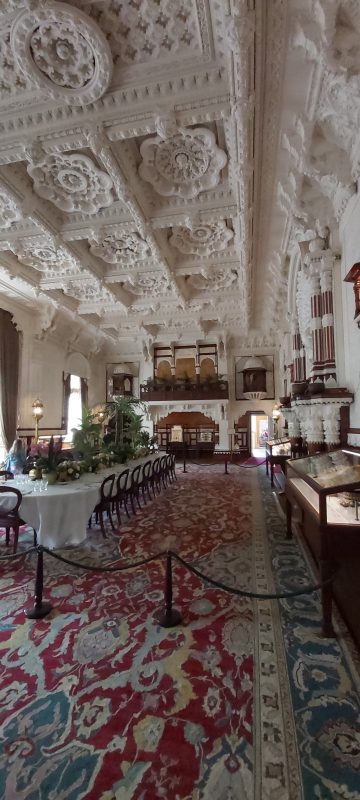
The grounds are beautiful and I enjoyed strolling around the wooded park. One of the highlights of Osbourne is the nice beach. It’s a lovely spot and the water is quite calm in the sheltered bay, so great for swimming with kids. Interestingly, Queen Victoria’s bathing machine is on display. If you have watched the Victoria TV show you will know what this is. Basically, it’s a wooden hut that could be rolled directly into the sea in order to preserve her modesty, as this was a time when women did not swim publicly. The hut allowed her to get changed into her swimming costume and swim in privacy.
Tip:
- If your are visiting Osbourne on a warm summers day, take your beach gear with you and spend some time enjoying the lovely beach.

The Needles
The first time we were scheduled to visit the Needles, a fierce storm blew in and closed the area for the day. So if you are visiting and the weather is bad, check that it is open before heading off. When we finally did get to visit, it was scheduled to rain in the afternoon, so we got there early in the morning. I’m glad we did because it was really quiet and we got to enjoy the views in peace.
We parked at the National Trust Car Park Tennyson Down (Totland, Totland Bay PO39 0HY). It’s not a large car park and as we left it was full, so I suggest arriving early. The car park is free and is not ticketed. From the car park you need to walk up and over the steep hill to get to the coastline path. At the top is a large cross in memory of Alfred Lord Tennyson as a beacon to sailors.
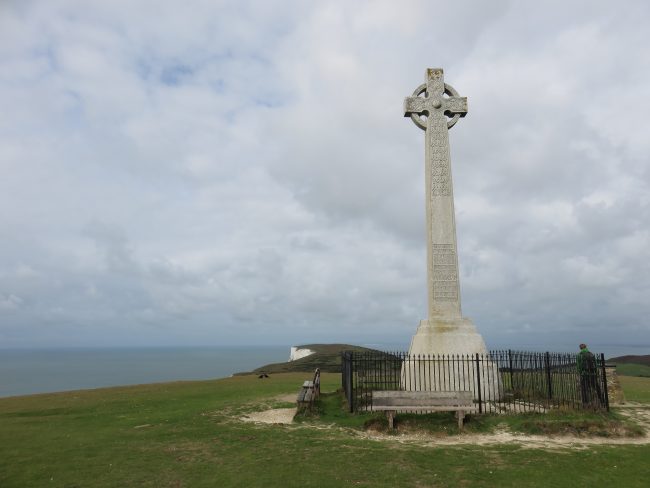
We continued our walk along the coast towards the Needles that sits on the very western tip of the Island. There were lots of little birds chirping amongst the gorse. We walked down to the point where the National Trust site The Needles Old Battery and New Battery. There are stunning views of the dramatic chalky white cliffs. On this site is also the Old Battery, a Victorian fort built in 1862 for a war that never took place. But it did end up being called into action during both World Wars. Further up the headland stands the New Battery. Here a small exhibition and a recreation of one of the rooms, of Britain’s Cold War ‘race for space’, when British-made rockets were secretly tested here.
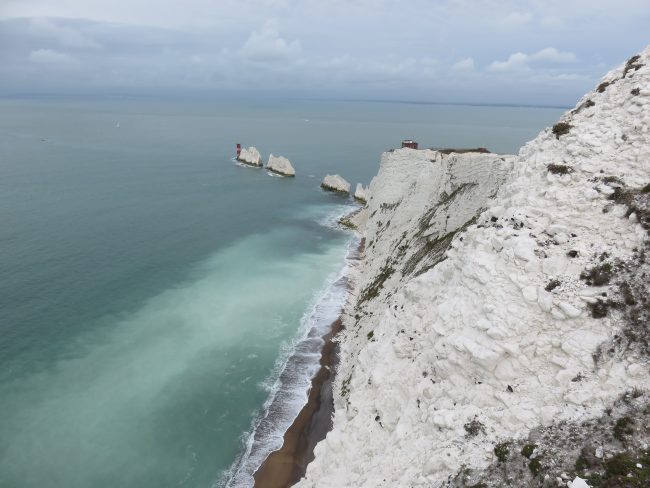
From here you can walk around to the touristy side of the Needles with its colourful sandy cliff side. There is paid car park here, and a theme park – not my cup of tea, but people seemed to be enjoying themselves. You can also pay for a chairlift ride down to the beach. Personally, I think the highlight here is the amazing views and coastline.
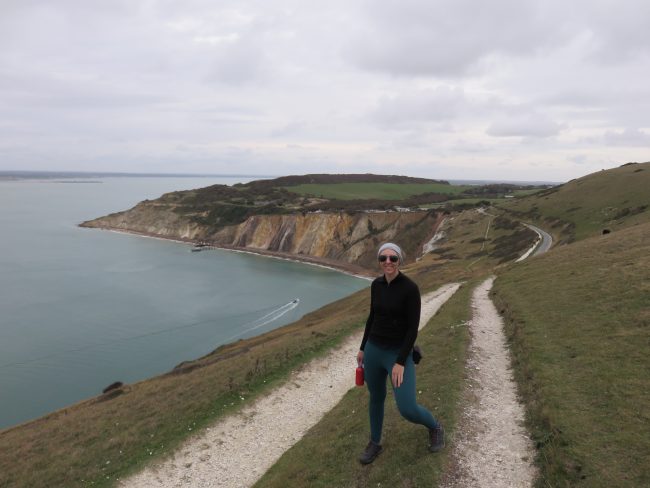
St Agnes’ Church
Gate Ln, Freshwater PO40 9PY
On our drive back to Brighstone from the Needles we stopped in at St Agnes’ Church, a gorgeous thatched church. The church is dedicated to St Agnes of Rome who, as a young girl, was murdered by the Romans for refusing to deny her Christian faith. The church was built in 1908 and funded by public subscription, to enable the residents and visitors to Freshwater Bay to worship.
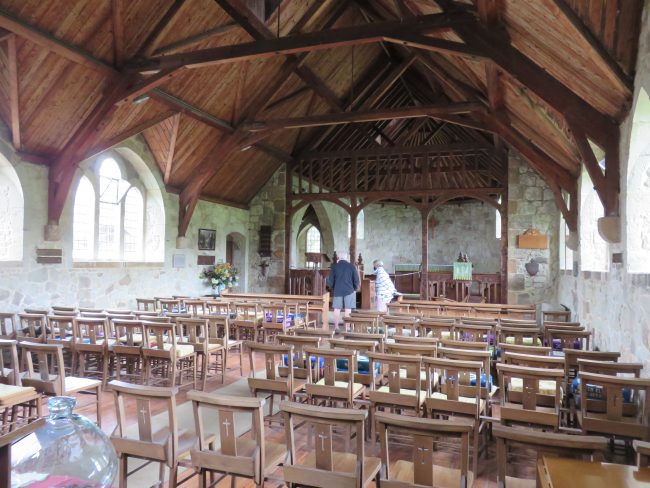
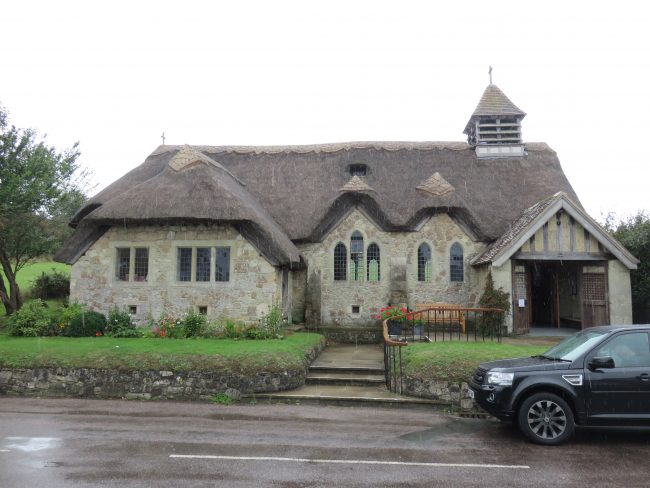
St Helens Duver
St Helens Duver is a really lovely beach to relax in. There is a small paid car park along the shoreline, but it gets parked out early. Since we are National Trust members we parked in the National Trust car park around the corner (free for members, entry fee applies for non members). We spent the morning just relaxing here on the beach. There’s also food and drinks available in a small café here.
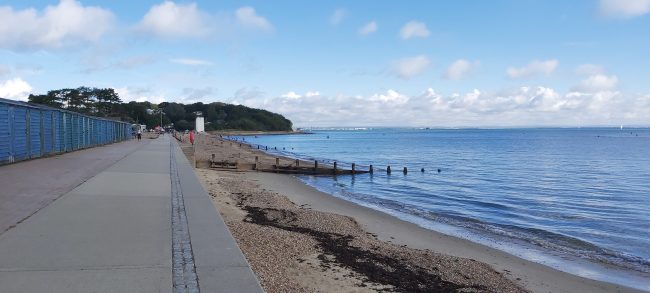
Adgestone Vineyard
Upper Rd, Brading, Sandown PO36 0ES
Britain is not known for its wine, but due to climate change, the more traditional wine growing regions are becoming too hot. The big vineyards are now snapping up properties in the UK to create vineyards. I love wine, so was keen to try some British wine. I thought that a vineyard on the Isle of Wight would be a good place to start. We visited Adgestone Vineyard, which is located on a south facing slopes with stunning views and almost frost free microclimate.
They have a lovely onsite café and small shop selling both their wine and local produce, including their chilli products Arson Fire which was really tasty. We sat in the sun and enjoyed tasting their small wine collection with a really tasty meat and cheese platter. I enjoyed their oaked white, but found the dry white a little too sweet. Their full bodied red was easy drinking. Afterwards we took a stroll around the vineyard. They also have some cute goats and chickens here as well.
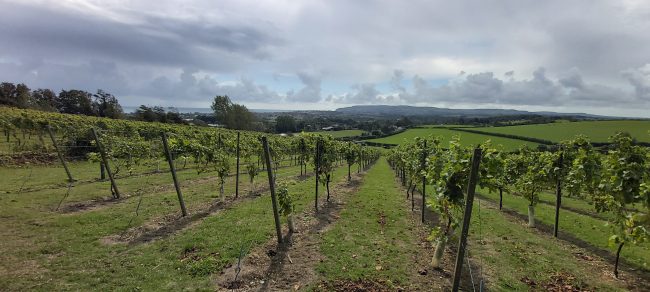
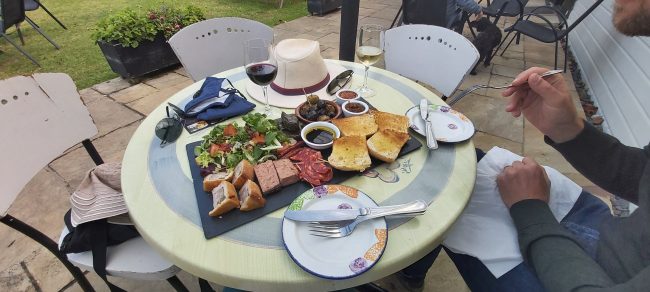
Appuldurcombe House
Appuldurcombe Rd, Wroxall PO38 3EW
The 18th century baroque Appuldurcombe House is managed by English Heritage but is free to visit. There is a large car park beside the house. The house was once the grandest house on the Isle of Wight, but now, only it’s shell survives. There is a small part of it intact that you can visit, but mostly it’s only the front façade and some walls remaining. It must have been a handsome house in its time. The house sits in picturesque countryside with plenty of paths to explore, so we headed off on foot. We walked down the path from the car park and through the old stone gates until eventually we came upon the Donkey Sanctuary.

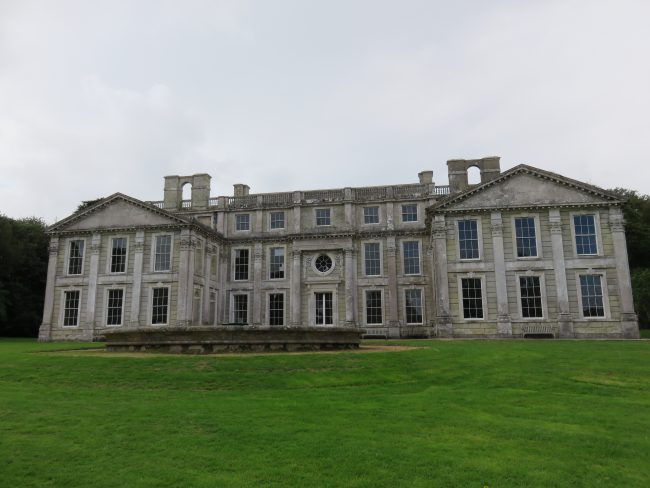
Isle Of Wight Donkey Sanctuary
Lower Winstone Farm, Ventnor PO38 3AA
We hadn’t planned on visiting the Donkey Sanctuary, but it was a lucky coincidence that we happened to come upon it during our walk from Appuldurcombe House. It is a worthy cause, so although it is free to visit, please give back by donating or at least purchasing something at the onsite shop or café. Having grown up with horses, I know only too well the great expense of providing for these animals. It was a clean and well run sanctuary with a variety of donkey and small ponies to meet. I liked the large display board so you can see the stars of the show.
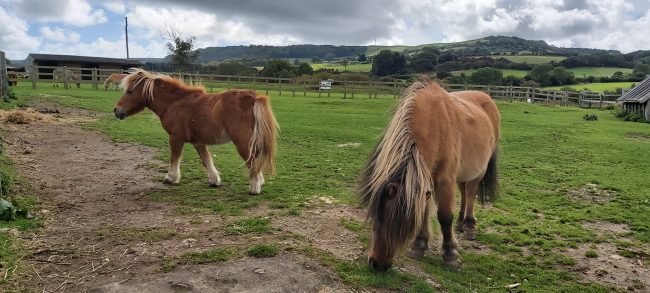

Garlic farm
Mersley Ln, Newchurch, Sandown PO36 0NR
If you love garlic then the Garlic Farm would be a great place to visit. We had just harvested a bumper crop of garlic this year, so we didn’t end up visiting.
Other English Royal Residences to Visit
If you enjoyed this post on visiting the royal residence of Osbourne house, then check out my other posts:
- Visiting Sandringham Estate – Where the Royals Spend Their Christmas
- Exploring Windsor Castle & Windsor Great Park
Practical Tips for Visiting the Isle of Wight
- How long should I visit the Isle of Wight for? You can squeeze the major attractions into a weekend, but if you wanted to explore more then stay for the week.
- Currency: British pound.
- Language: English
- Currency: British pound. There is no cash machine/ATM in the village. However, shops typically take card.
- Tipping: Not required, but people usually round up.
- Electricity: The electrical current is 230 volts AC. Wall outlets take a three pronged plug only used in the United Kingdom and Ireland. However, you are better off purchasing a worldwide adaptor that can be used in the United Kingdom as well other countries. At least then you can potentially get some further use out of it on future vacations. If you’re taking a number of electronics with you, then I would recommend purchasing a couple of these adaptors.
- Driving: In the UK they drive on the left hand side of the road with speed signs in miles per hour (mph).
- Navigating: We used Google’s free Offline Maps. Google Offline Maps allows you to access free maps for navigating that can be used offline i.e. you don’t need WIFI, data, or roaming to be able to use them. Make sure you download a map to use when you find yourself without internet.
- Using your phone as a GPS will drain your battery quickly, so use a portable battery charger which you can use to charge your phone and any other USB chargeable devices.
- If you prefer a paper map, then purchase a road map before you go. At least it’s reliable and won’t run out of battery or malfunction like the electronic options!
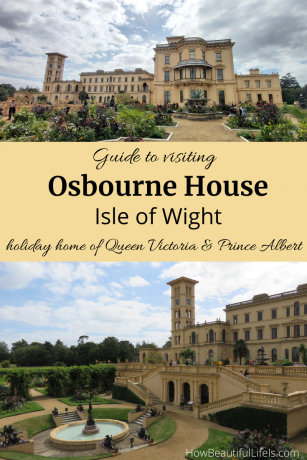

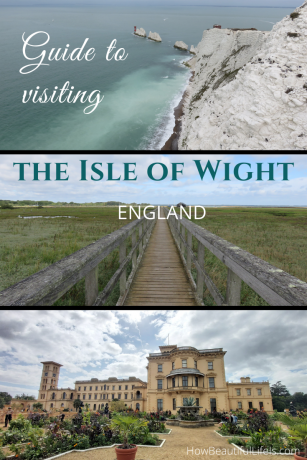
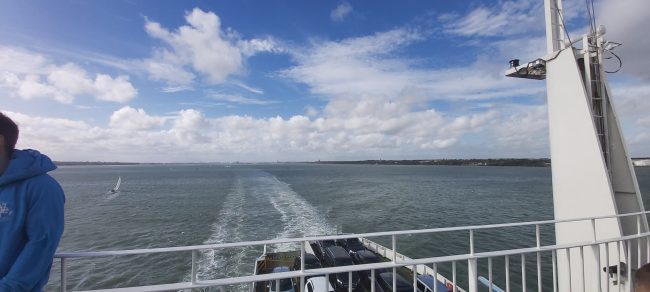
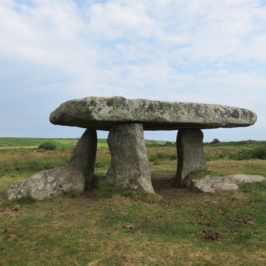
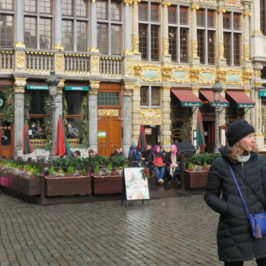
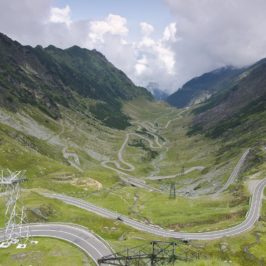
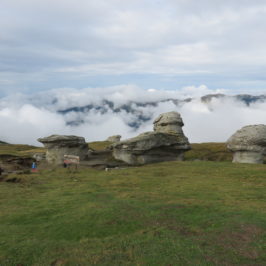
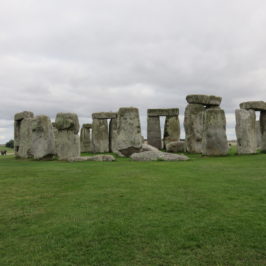
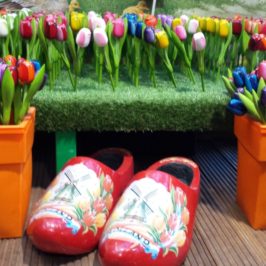
Paul Scott
You have an error concerning the voltage in your Electricity advice – it should say 230 volts.
https://www.worldstandards.eu/electricity/plug-voltage-by-country/uk/
“What is the mains voltage in the United Kingdom?
Just like the rest of Europe, the voltage in the UK is 230 volts and the frequency is 50 Hz.”